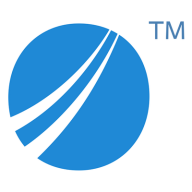

Find out in this report how the two Data Integration solutions compare in terms of features, pricing, service and support, easy of deployment, and ROI.
Our stakeholders and clients have expressed satisfaction with Azure Data Factory's efficiency and cost-effectiveness.
The technical support is responsive and helpful
The technical support from Microsoft is rated an eight out of ten.
The technical support for Azure Data Factory is generally acceptable.
Having a local partner was crucial for us while they were there.
TIBCO's support, especially for integration products, is swift.
Azure Data Factory is highly scalable.
The solution has a high level of stability, roughly a nine out of ten.
There are no significant stability issues as long as the product's capabilities are understood and not overly pushed.
Incorporating more dedicated API sources to specific services like HubSpot CRM or Salesforce would be beneficial.
There is a problem with the integration with third-party solutions, particularly with SAP.
I suggest integrating some AI functionality to analyze data during the transition itself, providing insights such as null records, common records, and duplicates without running a separate pipeline or job.
TIBCO Spotfire and ClickView need improvement in scheduling, which is critical yet lacking in quality.
It could be very useful if the coding part of using the platform could be more user-friendly in terms of visual capability.
The pricing is cost-effective.
It is considered cost-effective.
TIBCO Spotfire's pricing is high, particularly in traditional markets like Turkey, impacting market penetration.
The orchestration features in Azure Data Factory are definitely useful, as it is not only for Azure Data Factory; we can also include DataBricks and other services for integrating the data solution, making it a very beneficial feature.
The platform excels in handling major datasets, particularly when working with Power BI for reporting purposes.
It connects to different sources out-of-the-box, making integration much easier.
TIBCO Spotfire integrates with R and Python, offering a differentiator from the competition.
I think having Python included is a big win because you get the chance to customize your algorithm and your in-house development without having a big dependency on a third party.
| Product | Market Share (%) |
|---|---|
| Azure Data Factory | 5.2% |
| Informatica PowerCenter | 6.0% |
| SSIS | 5.7% |
| Other | 83.1% |
| Product | Market Share (%) |
|---|---|
| TIBCO Spotfire | 1.1% |
| Microsoft Power BI | 14.1% |
| Tableau Enterprise | 10.3% |
| Other | 74.5% |


| Company Size | Count |
|---|---|
| Small Business | 31 |
| Midsize Enterprise | 19 |
| Large Enterprise | 55 |
| Company Size | Count |
|---|---|
| Small Business | 18 |
| Midsize Enterprise | 12 |
| Large Enterprise | 39 |
Azure Data Factory efficiently manages and integrates data from various sources, enabling seamless movement and transformation across platforms. Its valuable features include seamless integration with Azure services, handling large data volumes, flexible transformation, user-friendly interface, extensive connectors, and scalability. Users have experienced improved team performance, workflow simplification, enhanced collaboration, streamlined processes, and boosted productivity.
TIBCO Spotfire is a versatile data analytics platform that can handle large datasets and be deployed on-premise or in the cloud. Its dynamic reporting, easy creation of dynamic dashboards, and highly customizable tool make it a valuable asset for process data analysis, industrial performance dashboards, problem root cause analysis, business intelligence, and real-time analytics for IoT devices in the energy sector.
The solution also offers data science functions, map visuals, R and Python integration, and the ability to write HTML and JavaScript text areas. Spotfire has helped organizations deliver projects more efficiently and cost-effectively, allowing for faster data analysis.
We monitor all Data Integration reviews to prevent fraudulent reviews and keep review quality high. We do not post reviews by company employees or direct competitors. We validate each review for authenticity via cross-reference with LinkedIn, and personal follow-up with the reviewer when necessary.